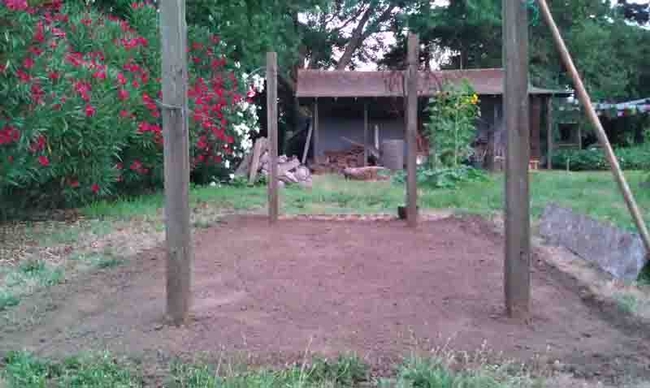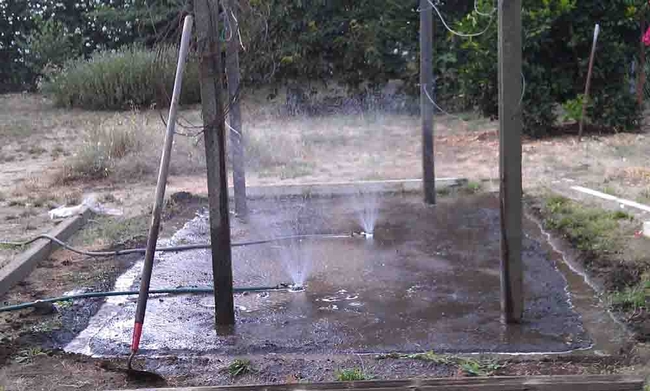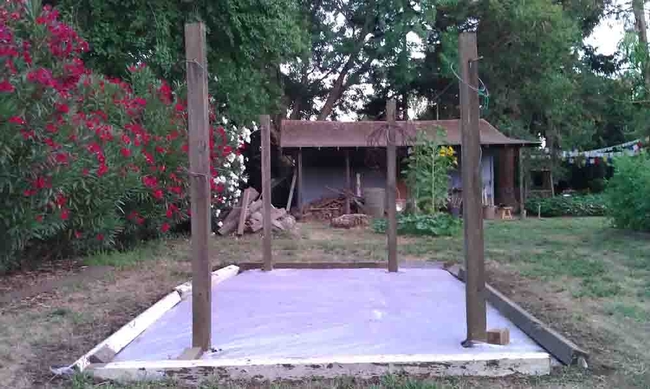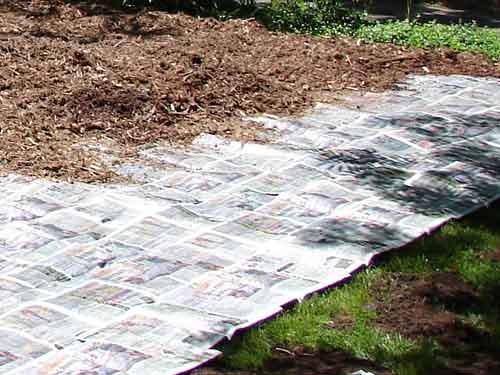We have endured multiple years of drought, and are probably in store for more. For many of us, it makes sense to replace all or part of our lawn area with less water-intensive plantings.

Step One: observe and plan. What existing trees and plants do you want to keep or remove? What are the sun and shade patterns within your yard? What types of grass grow in your lawn? Do you want any additional amenities, such as paving or a shade structure? How will you irrigate your new plants?
Step Two: kill your lawn. Homeowners can use two eco-friendly methods to kill their lawns: Solarizing or Sheet Mulching. For detailed instructions on solarizing, see UC IPM Pestnote on solarization. For instructions on sheet mulching, see our Real Dirt blog post on Sheet Composting.

Sheet mulching kills weeds by starving them of light. It takes 6 to 10 months and can be started any time of the year as long as at least three months of growing season are included. Sheet mulching works in sun or shade, and is effective on all grasses, including Bermuda grass, and many annual and perennial weeds. It is left in place permanently; over time, the dead lawn, sheeting, and mulch will break down into soil-enriching compost. Sheet mulching should be placed before new plants are installed if being used alone to kill lawn or weeds. It can be placed after plants are installed if solarizing has been completed first. New hardscape and irrigation should be installed before commencing solarizing or sheet mulching.

Step Three: replant. Whichever method you choose to kill your lawn, time it so that you are ready to replant in the fall, winter, or early spring. The cool temperatures and moist soils of our wet season allow drought tolerant plants to develop the healthy roots they need to thrive with little water during the heat of summer. Taking time to thoroughly kill the grass and waiting until the climate conditions are suitable for new plants will ensure the long-term success of a lawn replacement project.

UC Master Gardeners of Butte County are part of the University of California Cooperative Extension (UCCE) system. To learn more about us and our upcoming events, and for help with gardening in our area visit our website. If you have a gardening question or problem, email the Hotline at mgbutte@ucanr.edu or leave a phone message on our Hotline at 530-552-5812. To speak to a Master Gardener about a gardening issue, or to drop by the MG office during Hotline hours, see the most current information on our Ask Us section of our website.